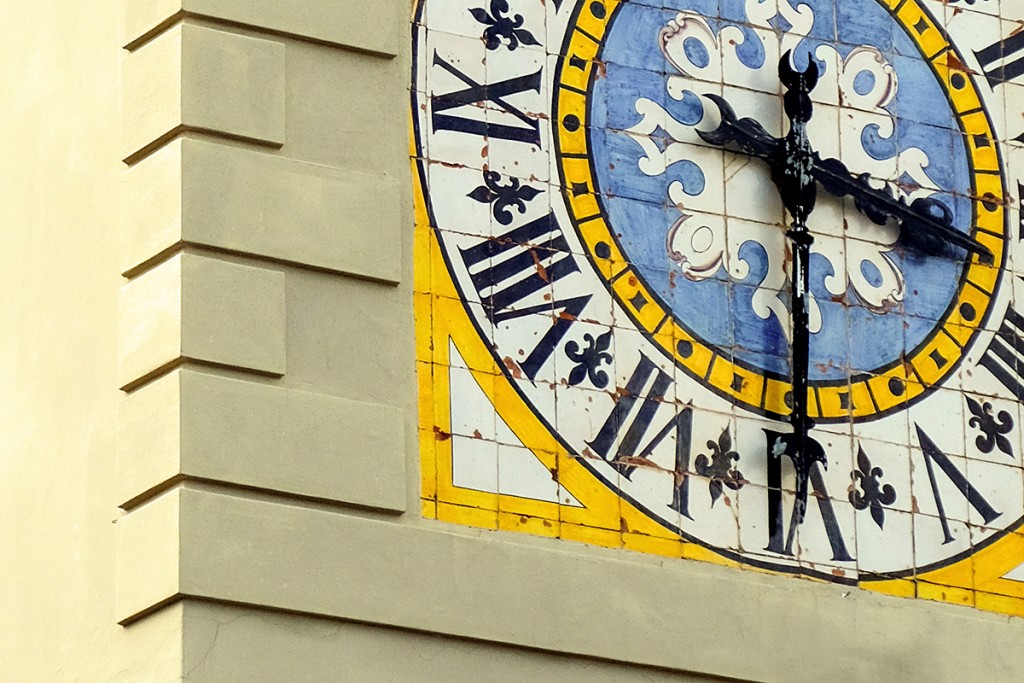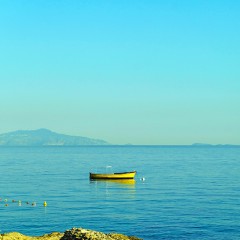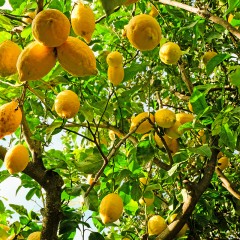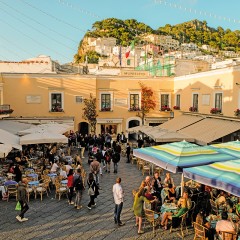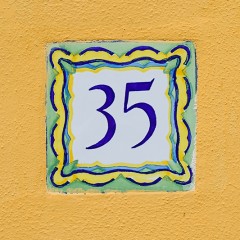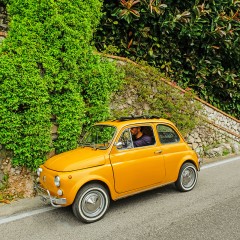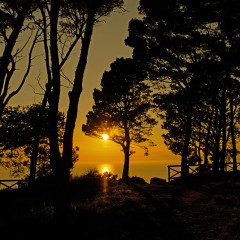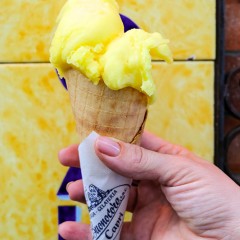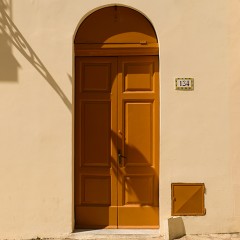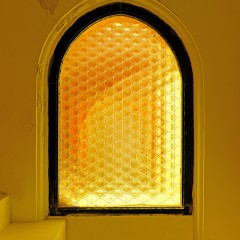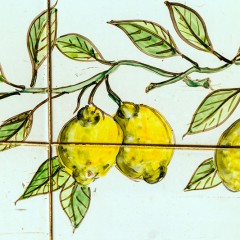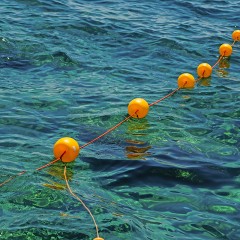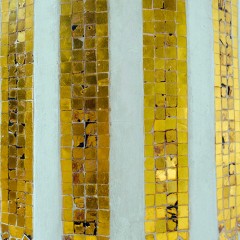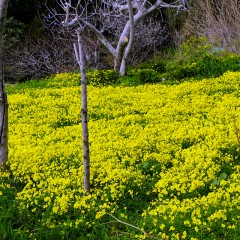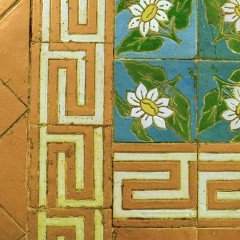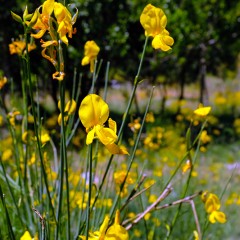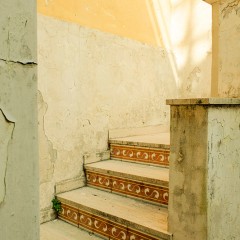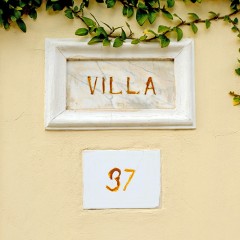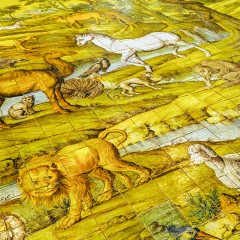
Tutti i colori del GIALLO
Egocentrico e prepotente. Con una palette che va dall’ocra al paglierino e che spesso profuma di ginestra e limone
testo e foto di Simona Schettino
Se chiedessimo a un bambino di disegnare il sole rovisterebbe nella sua scatola dei colori e pescherebbe senza esitazione il matitone più giallo di tutti, farebbe un bel cerchio sul foglio di carta e lo riempirebbe energicamente con tratti pieni di convinzione perché non ci sono dubbi, il sole è giallo.
Sarà per questo che storicamente è considerato un colore illusorio; ci illude di colorare la nostra cara e necessaria stella tanto da aver convinto anche gli astronomi a classificarla come nana gialla ma che gialla non è perché, a quanto pare, il sole è bianco.
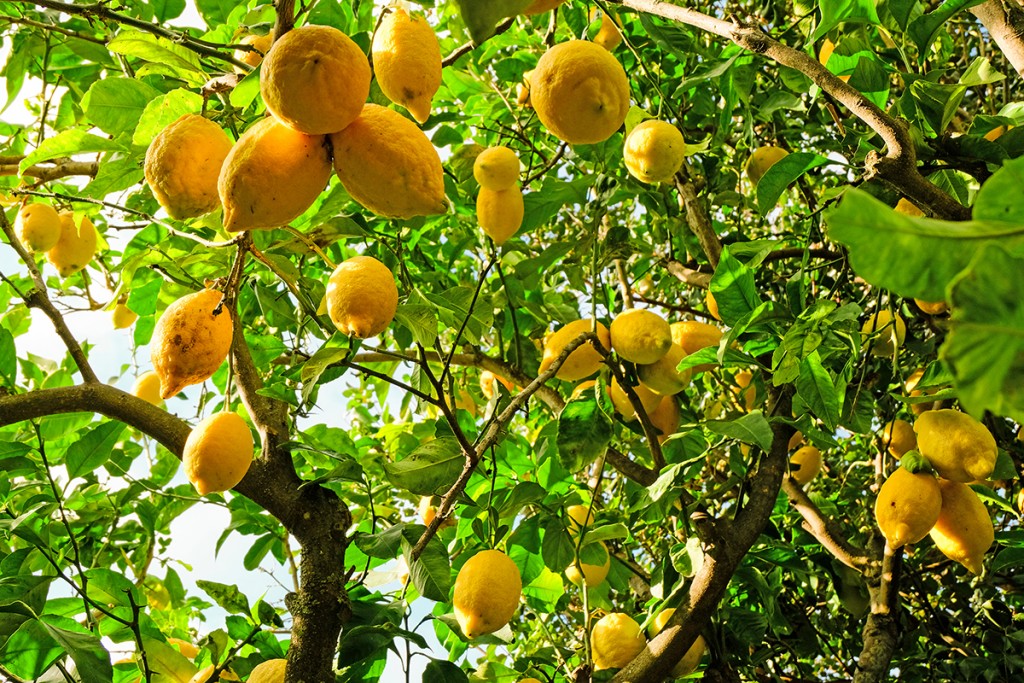 Un’illusione che, nonostante l’evidenza, decidiamo di non smascherare perché complementare con quell’altra meravigliosa illusione che è l’azzurro-blu del cielo. Quanto sono belli il giallo e il blu insieme?
Un’illusione che, nonostante l’evidenza, decidiamo di non smascherare perché complementare con quell’altra meravigliosa illusione che è l’azzurro-blu del cielo. Quanto sono belli il giallo e il blu insieme?
Sarà per questo motivo che l’architetto Giovanni Battista Caes abbracciò questa bugia e, ispirandosi a un disegno di Edwin Cerio, disegnò il tipico bordo Capri, quella serie di archetti a tre colori che oggi vediamo incorniciare tutta l’odonomastica dell’isola. Verde la natura, blu il mare, giallo il sole.
Un giallo egocentrico e prepotente quello caprese, quando decide di palesarsi lo fa sempre in modo teatrale. Basti pensare ai tramonti giù al faro e a quell’attimo prima che la sfera incandescente bruci la curva dell’orizzonte durante il quale un giallo bollente scoppia nell’atmosfera e colora ogni cosa: giallo il mare, gialla la roccia, gialli i discorsi e ogni parola. Un giallo che resta addosso perché, se vogliamo conferirgli un talento a questo colore, è indubbiamente quello di saper colorare, tingere le superfici, ingoiare il resto dell’arcobaleno.
Sembra che il giallo voglia sempre esserci, anche se impercettibile, sullo sfondo, in secondo piano, la sua prepotenza gli impone di presenziare. Non a caso è il colore più utilizzato nella segnaletica o per farsi notare. L’ha scritto anche Van Gogh, «non c’è blu senza giallo e senza arancione, e se si aggiunge del blu, bisogna aggiungere anche del giallo e dell’arancione». Un giallo, il suo, ancora più traditore perché frutto della xantopsia di cui soffriva, un disturbo visivo che mostra gialli gli oggetti bianchi.
In effetti sembra che il giallo voglia sempre metterci in crisi, “sei sicuro che quello che vedi sia il colore della realtà?” ci dice. Un quesito che all’inizio del Novecento ha fatto impazzire anche le “belve” francesi, la cosiddetta corrente artistica dei fauves che, decisi in una ribellione contro le costrizioni oggettive nelle quali i colori erano stati inseriti, scelsero di usarli con un approccio più soggettivo. Il risultato fu una visione del mondo “riscaldata” perché, a quanto pare, la soggettività della loro realtà era composta soprattutto da colori caldi. Tra questi ce n’era uno, molto diffuso all’epoca e nato proprio qui, sulle pendici di quel vulcano che da Capri vediamo sbucare in ogni angolo, il giallo di Napoli. Questo pigmento veniva ricavato dai residui di roccia eruttiva e dava come risultato un giallo tenue, delicato, esattamente quel giallo che colora tutto il golfo a una certa ora del pomeriggio. Napoli è gialla, dicono in molti.
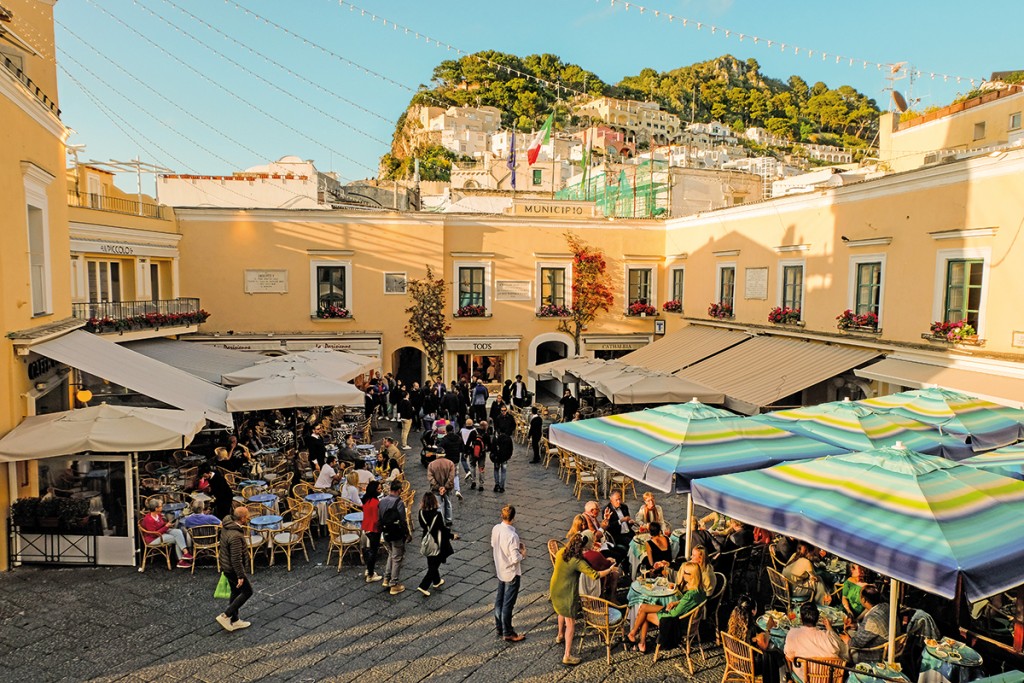 Ma un giallo quasi rosa che ricorda il colore del tufo romano, quello che ritroviamo sbriciolato ovunque su tutta l’isola: mattoni, reticolati, alte pareti polverose che possiamo toccare con le mani e pensare vissute da quei romani che abitavano Capri migliaia di anni fa. Nonostante non fossero noti per essere bravi tintori, li possiamo immaginare intenti a raccogliere rami di quella ginestra che ancora oggi punteggia di oro la collina di Anacapri e che insieme al guado e allo zafferano ha colorato di giallo l’impero Romano.
Ma un giallo quasi rosa che ricorda il colore del tufo romano, quello che ritroviamo sbriciolato ovunque su tutta l’isola: mattoni, reticolati, alte pareti polverose che possiamo toccare con le mani e pensare vissute da quei romani che abitavano Capri migliaia di anni fa. Nonostante non fossero noti per essere bravi tintori, li possiamo immaginare intenti a raccogliere rami di quella ginestra che ancora oggi punteggia di oro la collina di Anacapri e che insieme al guado e allo zafferano ha colorato di giallo l’impero Romano.
Capri invece la colora tutt’ora, non solo punteggiandola di luce per tutta l’estate, ma anche ricoprendola, letteralmente, due volte l’anno: il 14 maggio e il 13 giugno. Queste due date segnano le celebrazioni dei due patroni dell’isola, San Costanzo a Capri e Sant’Antonio ad Anacapri, onorati entrambi con il fiore della ginestra che per l’occasione viene raccolta in grandi ceste e lanciata in aria, come pioggia gialla, durante i riti.
A questo punto c’è da chiedersi se è sempre la ginestra ad aver colorato anche le maioliche gialle del paradiso. Non quello che immaginiamo sulle nostre teste ma quello che, ad Anacapri, possiamo ritrovare sotto i nostri piedi. Il magnifico pavimento della Chiesa di San Michele Arcangelo, una piccola chiesetta barocca che affaccia su piazza San Nicola e affianca il convento delle suore teresiane. Sarà questa convergenza di santi a rendere estremamente suggestivo questo luogo e lo speciale pavimento che ospita.
Realizzato nel 1761 dal maestro riggiolaro di origini abruzzesi Leonardo Chianese su disegno del pittore Francesco Solimena, racconta in modo affascinante e a tratti fantasioso la cacciata di Adamo ed Eva dal paradiso terrestre. Un pavimento che non si calpesta con i piedi ma solo con lo sguardo, grazie a una strettissima e graziosa scala a chiocciola che porta sulla balconata della chiesa che permette una visione completa di questo Eden stellato dove tutto è ocra e giallo paglierino.
Una palette di colori che curiosamente e sorprendentemente ci riporta a un altro pavimento caprese, la cui sacralità ha tutt’altro significato. Si trova sulla collina di Tiberio, nel seminterrato di Villa Lysis, dimora liberty fatta costruire durante i primi anni del Novecento dal barone francese di origini svedesi Jacques Fersen. Il pavimento in questione riveste la camera cinese, una stanza che il barone dedicò ai piaceri dell’oppio. La scelta del giallo come colore predominante risiederà molto probabilmente nel rimando orientale a cui anche il nome della stanza si riferisce. In Cina il giallo simboleggia il colore della terra e del centro dell’universo, è il colore dell’impero e del potere supremo. Ma forse sarebbe meglio immaginare un motivo meno intuitivo, forse che Fersen si sia fatto convincere dalla qualità illusoria di questo colore, dal suo essere ingannevole e chimerico perfettamente in sintonia con l’attività a cui l’aveva destinato?
Basta uscire da questa stanza e ripercorrere la stretta stradina dal nome altrettanto stretto, via Lo Capo, per imbattersi in un altro giallo, un giallo che ammanta tutta l’isola, il più prezioso di tutti perché “qui tocca anche a noi poveri la nostra parte di ricchezza” scrive Montale in una delle sue liriche più belle, “ed è l’odore dei limoni”.
Sono il simbolo della Dolce Vita, piccoli soli tascabili. Sembra che il loro intento, a ogni fioritura, sia quello di ringraziarci per averli adottati. Nati presumibilmente in Cina e portati nel Mediterraneo dagli arabi, i limoni hanno scelto di illuminare il sud Italia con il loro giallo di gratitudine. Noi ricambiamo l’affetto proteggendoli d’inverno e offrendoli d’estate come piccole poesie da sorseggiare in un caldo pomeriggio d’agosto seduti nell’abbraccio più giallo di tutti che è la Piazzetta di Capri.
Every shade of YELLOW
Egocentric and overbearing. With a palette of colours ranging from ochre to straw-coloured, and often with the fragrance of broom and lemon
text and photos by Simona Schettino
If you asked a child to draw the sun, they would rummage through their box of crayons and without hesitation would pull out the yellowest crayon of all. Then they would draw a beautiful circle on the piece of paper and colour it in energetically with bold, confident strokes. Because there’s no doubt about it: the sun is yellow.
Perhaps that’s why it is historically considered an illusory colour; our illusion that our much loved, much needed sun is yellow is so strong that we have even convinced our astronomers to classify it as a yellow dwarf, although it is not yellow at all: apparently, the sun is white.
 Despite the evidence, however, we decide not to reveal the illusion because it complements that other marvellous illusion, that the sky is azure blue. And yellow and blue go so well together, don’t they?
Despite the evidence, however, we decide not to reveal the illusion because it complements that other marvellous illusion, that the sky is azure blue. And yellow and blue go so well together, don’t they?
Perhaps that’s why architect Giovanni Battista Caes embraced the lie and, taking inspiration from a drawing by Edwin Cerio, designed the typical Capri border, that series of little arches in three colours that now frames all the street names displayed on the island. Green for nature, blue for the sea and yellow for the sun.
The Capri yellow is egocentric and overbearing, and when it decides to show itself, it always does so in a very theatrical manner. Take the sunsets by the lighthouse and that moment just before the incandescent sphere burns through the curve of the horizon, when a boiling yellow explodes into the atmosphere and tinges everything yellow: the sea, the rocks, people’s conversations and every word that is spoken. It is a yellow that remains all around, because if we were to give this colour a talent, it would definitely be the ability to colour and paint surfaces, swallowing up all the other colours of the rainbow.
It is as though yellow always wants to be there, in the background, even if it is imperceptible; its overbearing nature makes it insist on always being present. It is no coincidence that it is the colour used most frequently in signs, or to draw people’s attention. Van Gogh noted that, too: “There is no blue without yellow and orange, and if you add blue, you also need to add yellow and orange.” His yellow was even more deceptive, because it was the result of the xanthopsia that he suffered from, a visual ailment that makes white objects appear yellow.
In fact it seems as though yellow always wants to cause trouble: “Are you sure that what you see is the real colour?” it says. In the early 20th century, it was this question that drove the French artistic movement known as the “fauves”, or “wild beasts”, mad: determined to rebel against the objective constraints imposed on colours, they decided to take a more subjective approach. The result was a “heated” vision of the world, because it seems that their subjective reality consisted mainly of warm colours. And one of these colours that was widely used at the time was created right here, on the slopes of the volcano that we can see from every corner of Capri: Naples yellow. This pigment was extracted from the remains of eruptive rocks and consequently produced a soft, delicate yellow, that very yellow that tinges the entire gulf at a particular time in the afternoon. Naples is yellow, many people say.
But it is a yellow that is almost pink, recalling the colour of the Roman tufa, which we find crumbled around all over the island: bricks, reticulated work, high, powdery walls that we can touch with our hands and imagine how they felt to the Romans who lived on Capri thousands of years ago. Although they were not known for being great dyers, we can imagine them intent on collecting those branches of broom that still dot the hillside of Anacapri with gold, and that, along with woad and saffron, coloured the Roman empire yellow.
And broom still colours Capri yellow today, not only dotting it with light throughout the summer, but also carpeting it, literally, twice a year: on the 14th of May and the 13th of June. These two dates mark the feast days of the two patron saints of the island: St. Constantius of Capri and St. Anthony of Anacapri. Both are celebrated with broom flowers that are gathered in large baskets for the occasion, before being thrown into the air, like yellow rain, during the ceremonies.
At this point one might wonder if broom was also used to colour the yellow majolica tiles of paradise. Not the paradise we imagine in our heads, but the one that we can find under our feet in Anacapri: the magnificent majolica floor of the church of San Michele Arcangelo, a small Baroque church that stands in Piazza San Nicola, next to the convent of the Theresian Sisters. Perhaps it is the convergence of saints that makes this place, and the special floor that it houses, particularly striking.
Created in 1761 by Leonardo Chianese, a majolica master craftsman originally from Abruzzo, to a design by the artist Francesco Solimena, it recounts in a fascinating and at times fanciful way the story of Adam and Eve being cast out of paradise. It is not a floor to walk on, but one that you can gaze on from above, thanks to an elegant and very narrow spiral staircase that leads to the church balcony and allows a complete view of this star-studded Eden, where everything is coloured ochre and pale yellow.
Somewhat strangely and surprisingly, this palette of colours takes us to another Capri tiled floor, with a very different sacred 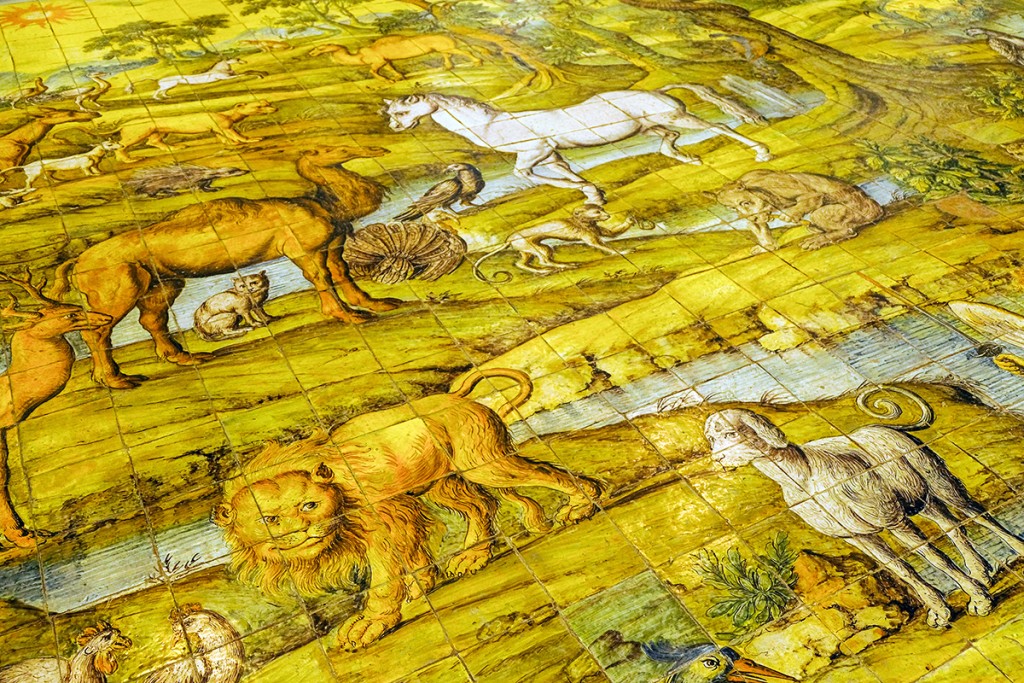 significance. It is on the Tiberio hillside, in the basement of Villa Lysis, the Liberty-style house built for Jacques Fersen, a French baron of Swedish ancestry, in the early years of the 20th century. This decorative floor is in the Chinese room, which Baron Fersen devoted to the pleasures of opium-smoking. The choice of yellow as the predominant colour probably derives from the oriental character of the room, as indicated by its name. In China, yellow symbolizes the colour of the earth and the centre of the universe; it is the colour of empire and of the supreme power. But perhaps there is a less obvious reason: perhaps Fersen let himself be convinced by the illusory quality of this colour, by its deceptive and visionary nature, perfectly in harmony with the activity he had planned for the room?
significance. It is on the Tiberio hillside, in the basement of Villa Lysis, the Liberty-style house built for Jacques Fersen, a French baron of Swedish ancestry, in the early years of the 20th century. This decorative floor is in the Chinese room, which Baron Fersen devoted to the pleasures of opium-smoking. The choice of yellow as the predominant colour probably derives from the oriental character of the room, as indicated by its name. In China, yellow symbolizes the colour of the earth and the centre of the universe; it is the colour of empire and of the supreme power. But perhaps there is a less obvious reason: perhaps Fersen let himself be convinced by the illusory quality of this colour, by its deceptive and visionary nature, perfectly in harmony with the activity he had planned for the room?
If you leave the room and walk along the narrow street with the equally narrow name, Via Lo Capo, you come across another yellow, one that covers the whole island. It is the most precious yellow of all because, as the poet Montale writes in one of his most beautiful poems: “Even we, the poor, have our share of that richness, and it is the fragrance of the lemon trees.”
Lemons are the symbol of La Dolce Vita, like miniature suns that you can put in your pocket. It’s as though their intention, with every blossoming, is to thank us for having adopted them. Thought to have originated from China and to have been brought to the Mediterranean by the Arabs, lemon trees have chosen to light up the south of Italy with their grateful yellow. And we return the affection, protecting them in winter and offering them in summer, like little poems to taste on a hot August afternoon, sitting in the yellowest embrace of all: the Capri Piazzetta.


